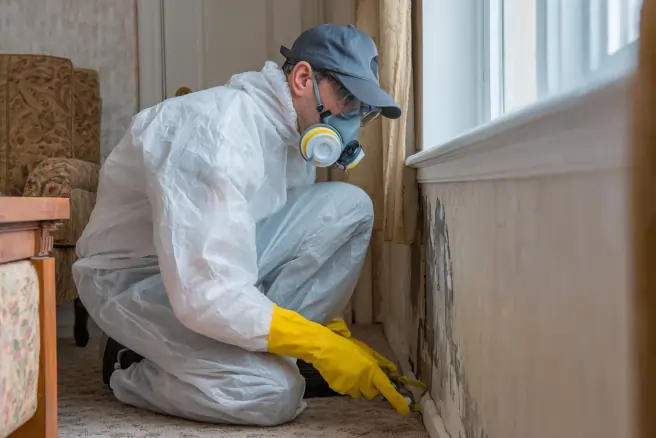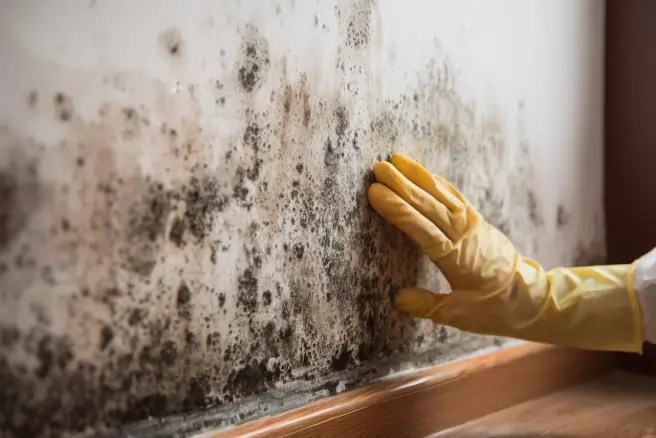
Titusville, Florida, the crown jewel of the Space Coast, captivates with its unbroken vistas of the Indian River Lagoon—where manatees glide beneath the surface and rocket contrails streak the horizon like fleeting dreams. Yet, for homeowners gazing from the wraparound porches of Riverview or the elevated decks of South Titusville, the aftermath of October 2025’s hurricane hangover—this second day of the month ushering a fragile calm after Milton’s 2024 moisture mayhem—brings a breath of concern: Stale, spore-laced air lingering post-mold removal. Brevard County’s brackish bay breezes, carrying 75-85% humidity and lagoon particulates, can recontaminate freshly cleared spaces, turning your serene sanctuary into a subtle health hazard with elevated VOCs and allergens that spike asthma flares 20% higher than inland averages.
Post-remediation air restoration isn’t mere maintenance—it’s a vital reboot, flushing mycotoxins and restoring crisp, coastal freshness to prevent recurrence in these water-kissed wonders. With Titusville’s older lagoon-liner homes—many with original HVAC from the Apollo era—vulnerable to salt-clogged ducts and vapor-trapping voids, targeted steps ensure your views stay unmarred by musty malaise. This guide, synced to the fall’s fading floods when dewy dawns deceive, outlines essential actions: From filtration fortresses to ventilation victories. In a town where launches lift spirits and lagoons soothe souls, reclaim your air—pure, invigorating, and profoundly yours—for family gatherings that sparkle like the river at twilight.
Post-Removal Air Perils: Why Titusville’s Lagoon Legacy Lingers in Lungs
Even after pros purge visible mold, microscopic remnants—dead spores, fragmented hyphae, and volatile organics—persist in dust and fabrics, recirculating via lagoon-laced winds that infiltrate unsealed windows. Titusville’s unique alchemy—brackish humidity from the Indian River mixing with clay soil vapors—creates a mycotoxin miasma, where Stachybotrys remnants inflame airways, mimicking the Space Coast’s ragweed rush but persisting indoors. Post-Milton 2024, local air quality indices dipped 15% in riverfront zones, with HVAC systems—often undersized for 1960s builds—trapping tainted particles like cosmic debris.
Family fallout: Kids inhale 2x the volume per pound, sparking wheezing during dockside play; seniors’ compromised clearance leads to fatigue fogging fishing trips. Allergens amplify: Lagoon pollen plus mold fragments double dermatitis odds. A 2025 Brevard Environmental Health snapshot reveals 28% of post-remediation homes retest “elevated” without intervention, underscoring the need for layered restoration. But breath back: Focus on filtration, flow, and freshness to flush the fog. In Titusville’s launch-pad precision, post-purge protocols propel purity—understand the undertow, then navigate to nectar air.
Timeline touch: Act within 72 hours of removal—spores settle fast in fall’s condensing calm. This primer propels: Know the nebula, then navigate to nebula-free.
Filtration Foundations: HEPA and Beyond for Particle Purge
Filtration forms the frontline—high-efficiency particulate air (HEPA) units ($150-300/portable) capture 99.97% of 0.3-micron spores, cycling rooms 4-6x hourly. For Titusville bungalows with open floor plans overlooking the lagoon, place one per zone—living areas get 300 sq ft coverage, bedrooms 200 sq ft—with activated carbon pre-filters ($20/replace) to snag VOCs from mycotoxins. Run continuously first week post-remediation, then auto-mode on humidity sensors.
HVAC harmony: Upgrade central filters to MERV 13 ($15/pack)—traps mold fines without straining blowers in older systems; change monthly in October’s flux, when river mists moisten intakes. For beachside with salt-clogged coils, antimicrobial coatings ($50/application) inhibit regrowth—DIY spray or pro tune ($200). Whole-home electrostatic precipitators ($400/install) ionize particles for 95% grab, ideal for multi-story with lagoon views.
Pro tip: Pair HEPA with UV-C lights ($100/add-on)—germicidal rays zap 99.9% airborne fungi; position in ducts for passive patrol. A Riverview retiree’s HEPA duo cleared post-flood haze in days, reviving river-watching without wheezes. Filtration fortifies, filtering the fog for fresh flow—essential for families breathing the brine.
Ventilation Victories: Circulating Coastal Crispness
Ventilation vanquishes stagnation—strategic airflow expels stale spores while importing lagoon-freshened breezes. In Titusville’s humid homes, exhaust fans ($50/bath) run 20-30 minutes post-shower, expelling 100 CFM of steam; upgrade to humidity-sensing models ($80) for auto-kick. Attic triumphs: Ridge vents ($100/linear ft) and solar whirlybirds ($150) promote cross-breeze, reducing trapped vapor 40%—crucial for sloped roofs catching river spray.
Whole-house fans ($300) pull cool October evenings through open windows, flushing 2x air volume hourly—screened for pollen, positioned intake low near lagoon sides. For crawl spaces under bungalows, powered vents ($100) with dehumidistat links exhaust damp to outdoors, preventing upward wick. Beachside bonus: Salt-resistant aluminum louvers ($20/pair) on gables resist corrosion, maintaining flow year-round.
- Bath exhausts: 50 CFM min; duct straight out, not attic.
- <Range hoods: 100 CFM, recirc-free; grease filters monthly.
- Window ops: Crack low/high for cross-flow, screens 20-mesh.
A South Titusville family’s fan fleet freshened flood-fogged air, allergies eased in a week. Ventilation vitalizes, ventilating the veil for vivid views.
Humidity Heroes: Dehumidifiers and Desiccants for Damp Defense
Humidity harnessed—target 40-50% RH to starve regrowth. Portable dehumidifiers ($150-250/30-pint) tackle garages or bonus rooms, emptying reservoirs daily; for lagoon-liners, whole-home units ($500-1,000) ducted to HVAC pull 70 pints, thermostatted to activate at 55%. In Titusville’s clay basements, desiccant wheels ($300) absorb without electricity, ideal for off-grid post-storm.
Natural nods: Rock salt buckets ($10/DIY) in closets desiccate quietly; silica gel packs ($5/10) in HVAC returns trap brine-born vapor. Crawl space specifics: Crawl-specific dehus ($400) with vapor barriers ($0.15/sq ft polyethylene) seal and suck, maintaining 45% below joists. Beach bungalows benefit: Salt-trap filters ($20) in units prevent mineral buildup.
Maintenance mantra: Clean coils quarterly, log RH trends via apps ($free)—October’s drop aids, but river rises rebound. An Imperial Estates inhabitant’s desiccant setup stabilized subfloor air, no musties in months. Heroes hold the humidity, heralding healthful homes.
Natural Neutralizers: Plants, Purifiers, and Odor Ousters
Nature nurtures neutrality—air-purifying plants like peace lilies ($15/pot) absorb VOCs, thriving in lagoon light; cluster 1 per 100 sq ft near vents. Snake plants ($10) filter night-formaldehyde from off-gassing post-remediation paints. Essential oil diffusers ($25) with eucalyptus ($8/bottle) mist mycotoxin masks—5 drops per ounce water, diffuse 30 minutes daily, ventilate after.
Ozone alternatives: Photocatalytic oxidizers ($150/plug-in) use UV to break volatiles molecularly—no byproducts in ozone-sensitive seniors. Baking soda bowls ($1/box) in corners neutralize odors passively; replace biweekly. For beachside, seashell scatters ($free/forage) absorb humidity naturally, a coastal quirk.
Combo creativity: Plants + purifiers for passive power— a Whispering Pines widow’s lily lineup lifted air post-purge, scents soaring. Neutralizers nurture, naturally nodding to lagoon lushness.
Monitoring and Maintenance: Sustaining the Sparkle
Monitor meticulously—indoor air quality testers ($100/multi-gas) track PM2.5, VOCs, RH; app-link for alerts at 50 µg/m³ spikes. Quarterly pro air audits ($200) sample post-fall flush. Maintenance musts: Duct cleans ($300/year) remove salt-spore sludge; filter flushes monthly.
Family follow: Kid-safe checklists—wipe vents weekly; senior schedules—dehu checks bi-monthly. In Titusville’s tight community, share sensor data via apps. A La Cita lane’s monitoring mesh maintained mold-free for years.
Sustaining safeguards sparkle, sustaining the Space Coast’s signature air.
For fresh-air frameworks, explore the ASHRAE’s Indoor Air Quality Resources, an engineering essential for environmental excellence.
Conclusion: Revive the River Breeze in Your Titusville Nest
Restoring air quality post-mold removal in Titusville revives the river’s whisper—filtration’s filter, ventilation’s vigor, humidity’s harness, neutralizers’ nurture, monitoring’s mastery interlace for invigorated indoors. In this launch-lit lagoon land, where October’s hush hides humidity’s hum, layer legacies of lightness. Your views—vivid, vital, and vapor-free—vanguard vitality, a breath of beachside bliss. Post-purge, pursue purity—your Space Coast sojourns soar, unencumbered by unseen shadows.
